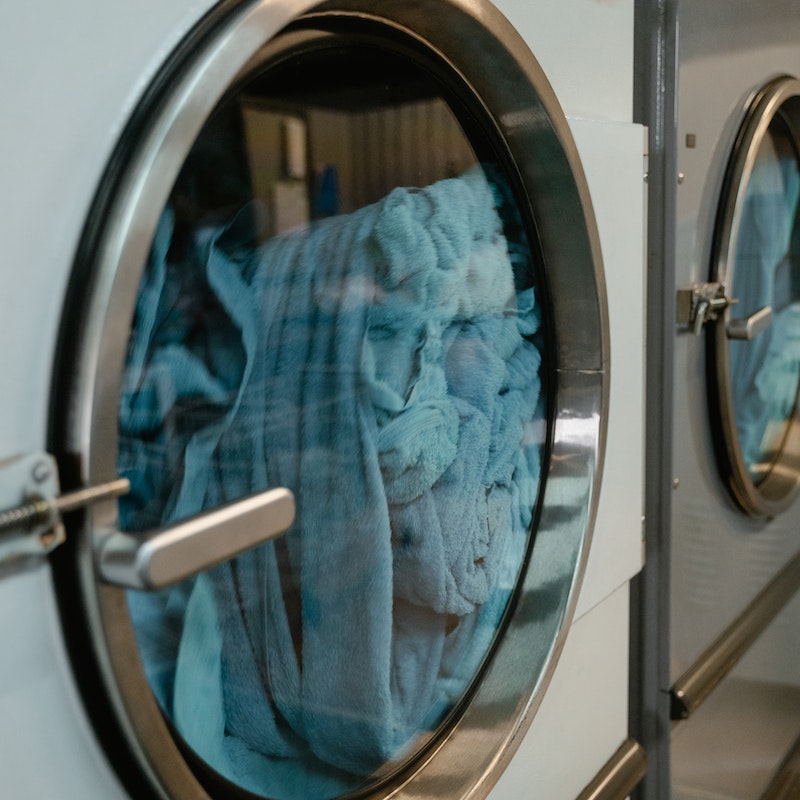Washing Machine Leaking From Bottom – Causes and Solutions
One of the most common household frustrations is discovering your washing machine leaking from the bottom; not only is it inconvenient, but this type of leak can also lead to water damage in your home if not addressed promptly. So, how to address washing machine leaking from underneath, and when should you call in the professionals? Let’s take a look.
Safety Precautions When Dealing With Electricity
Handling electrical appliances, especially when water is involved, requires utmost caution, so here’s what we recommend:
- Disconnect Power: Before inspecting or touching your washing machine, ensure it’s unplugged from the mains.
- Avoid Standing in Water: If there’s a large puddle, don’t step in it, especially while the appliance is connected to electricity! Use towels or mops to soak up the excess water first.
- Use Rubber Gloves: Wearing rubber gloves can offer an extra layer of protection against any electrical components you might touch, so pop on a pair before getting into your inspection.
Why is my washing machine leaking?
So, why would a washing machine leak from underneath? Here are some common causes:
- Faulty Hoses: Often, wear and tear can damage the hoses connecting the washing machine to the water source.
- Door Issues: For front-loading machines, a compromised door seal can cause leaks.
- Overloading: Overstuffing the machine can result in water spillage.
- Blocked Drains: Sometimes, the culprit is a blockage preventing water from draining correctly. If this is the case, you might need to fix your blocked drain in London with the help of a professional plumber.
- Detergent Overuse: Excessive detergent can cause excessive suds, which can lead to leakage.
Assessing the Leak
Here are a few ways you can determine the severity and source of the leak:
- Check Water Magnitude: Is it a small puddle or a significant overflow? The amount can indicate the possible issue.
- Monitor Leak Timing: Observe when the leak occurs – during filling, washing, or draining? This can help narrow down the potential problems.
Inspecting Hoses and Connections
Faulty hoses are a common cause of leaks, so inspect them and look for the following signs:
- Examine for Cracks: Regularly inspect hoses for signs of wear, including cracks, splits, or bulging areas.
- Ensure Tight Connections: Loose hose connections can lead to leaks, so you’ll want to check that they are securely fastened.
- Replace When Necessary: Hoses aren’t meant to last forever. If you find evident signs of wear, consider replacing them. A variety of reliable hose replacements can be found here.
Examining Door Seals
Particularly for front-loading washing machines, door and gasket seals are crucial for preventing water from escaping:
- Clean the Seals: Over time, dirt, hair, and other debris can accumulate on these seals, causing water to leak. Regularly wipe them down with a damp cloth.
- Check for Damage: Inspect the rubber seal for any signs of wear, tear, or mould. Any compromise in its integrity can cause leakage.
- Replace if Necessary: If the seal is noticeably damaged, it might be time for a replacement. This can often be a DIY job, but if you’re unsure, consult your machine’s manual or seek professional guidance.
Overloading and Uneven Loads
Surprisingly, the way you load your washing machine can cause leaks, with overloading a machine being a key culprit: overloading can result in water escaping from the sides or front of the machine, leading to small but manageable leaks.
Similarly, try to balance your loads: uneven loads can make the drum unbalanced, leading to potential leaks, so ensure that you’re distributing clothes evenly.
Drain Pump and Filter Inspection
The drain pump and filter are essential components of your washing machine’s drainage system, so here’s how to ensure they work optimally:
- Clean the Filter: Debris like coins, hairpins, and lint can block the filter, so regularly check and clean it to ensure smooth drainage.
- Inspect the Pump: Look for any signs of damage or obstructions. If you notice water pooling specifically during the drain cycle, the pump might be the culprit.
Detergent and Fabric Softener Residue
Using the wrong type or amount of detergent can also be a leaking culprit:
- Use High-Efficiency Detergent: Especially for HE (High Efficiency) washers, always use the recommended detergent type to prevent excessive suds.
- Follow Detergent Guidelines: Using more detergent than necessary doesn’t mean cleaner clothes; it often means more suds and potential leaks.
When to Call a Professional?
While many leaks can be solved with simple DIY fixes, there are times when it’s best to call in the experts. If you’re experiencing persistent leaks and you’ve tried the above solutions but the problem remains, it’s probably time to get professional input. You also shouldn’t try to fix internal component issues yourself: some leaks are caused by internal issues like a faulty drum or malfunctioning valves, which require specialised knowledge.
The Bottom Line
Having a leaking washing machine can be daunting, but it’s not always a reason for panic. While prioritising safety, start with easy external checks, and then work your way to potential internal issues, and when in doubt – or if safety is a concern – don’t hesitate to seek professional guidance. After all, your washing machine is a long-term investment, and regular maintenance ensures it serves you efficiently for years to come.
Keep Learning:
- Why are my Drains Gurgling?
- Can a Toilet and Shower Share the Same Drain?
- How to Stop Water Coming Up Through Bath Plughole?

